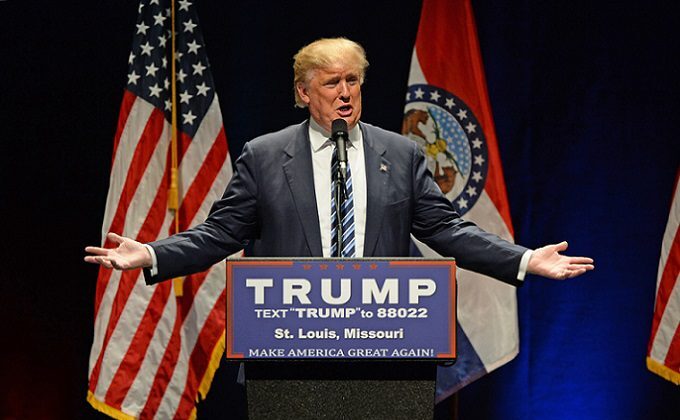Yoshito Hori, president of GLOBIS University, managing partner of GLOBIS Capital Partners, shares his views from an entrepreneur’s perspective.
The mainstream media hate Donald Trump . The Financial Times recently described him as a “promoter of paranoid fantasies, a xenophobe and an ignoramus.” The New York Times has given him unflattering nicknames ranging from “Donald the Dangerous” to “The Great Betrayer.” Even J.K. Rowling, the author of the Harry Potter books, waded in, denouncing him as “worse than Voldemort.”
How can a man so universally hated continue to win state after state in the primaries and be looking increasingly certain to become the Republican Party’s presidential candidate?
I’ve got a one-word answer to that: ATTENTION
People love Trump. People hate Trump. But no one ignores Trump.
All that attention, both positive and negative, translates into ratings, whether eyeballs on TV screens—the Republican debates have broken records for viewer numbers—or activity on Twitter (Trump has nearly 7 million Twitter followers), and other social media.
Looking at Donald Trump through a Japanese lens, I would compare him to the Tokyo Yomiuri Giants, Japan’s most dominant baseball team. (Think of Real Madrid or Manchester United in soccer or Michael Schumacher in Formula One racing, and you’ll get the general idea.)
People in Japan define themselves in one of two ways, either as “Giants supporters” or as “Giants haters.” There is no middle ground: You’re either with them or against them.
The existence of all these “anti-fans” has a paradoxical effect. When there’s a Giants game, they also tune in to watch, hoping to see their hated team lose. Naturally, this pushes up the ratings and further strengthens the Giants’ already strong team brand.
“Anti-fans,” in other words, behave exactly like real fans, except that their emotions run in the opposite direction!
A similar thing is going on with the Republican debates on US TV. All the anti-fans of Donald Trump tune in, hoping to see the man make a fool of himself. The result? Through-the-roof ratings which themselves become a news story and generate more attention.
One important feature of these “anti-fans,” whether with the Giants or Trump, is that generally they don’t support any other candidate or team against their hate object. Their participation is purely negative.
For instance, the Washington Post recently published an editorial denouncing Trump. While trashing Trump, the article did not propose any other candidate as a viable alternative. The upshot? Despite ostensibly being an “anti-Trump” piece, the editorial only served to increase the Trump buzz and boost his aura of inevitability.
As the old saying goes, there really is no such thing as bad publicity.
The Trump furor reminds me of an episode in Adventures of a Bystander, management thinker Peter Drucker’s memoir.
Henry Luce, the founder of Time and Fortune magazines, had gotten Drucker to help him edit Fortune’s tenth-anniversary issue in 1940. One story Drucker was handling dealt with IBM, then still a small/middle-sized company.
Luce wanted to highlight IBM’s innovative management style, including lifetime employment, continuous training and self-supervising project teams.
The article, however, touched on none of these positives. Instead, the writer, irrationally angry about CEO Thomas Watson’s refusal to allow alcohol in the company’s offices or country club, attacked him as the “American Hitler” and a “new-style Fuehrer.”
Drucker sent a copy of the story to IBM for prepublication review. Sure enough, a call from the CEO soon followed. Drucker was expecting a lawsuit; instead, Watson offered the writer the post of IBM PR director!
Watson explained to the astonished Drucker that he liked the fact that the writer “took him seriously,” and was happy to see IBM in Fortune magazine.
Positive and negative publicity are of roughly equal value. Love and hate are two sides of the same coin.
Another example of this can be found in Japanese magazines’ annual “sexiest man alive” and “least sexy man” lists. Plenty of the same men feature on both lists! One woman’s sexiest is another woman’s least sexy. The same men attract equally passionate fans and anti-fans.
Donald Trump could be selected as the Republican Party’s official presidential candidate any day now. None of his rivals has managed to generate a fraction of the attention he has—and appear not even to understand how to do so.
So far, the Trump campaign has supposedly spent only around one-seventh of Jeb Bush’s failed campaign. Leveraging news media and social media to develop irresistible and overwhelming buzz is both effective and cost-effective.
Trump knows that anything—good or bad—he says will be repeated, amplified and propagated for free by his millions of Twitter followers, whether they love or hate him..
What practical lessons can we draw from all of this?
1.Being controversial is an effective way to generate attention.
2.Being the center of attention involves being hated as well as liked.
3.Having legions of haters can provide a powerful publicity boost.
4.As long as you can handle the hate, having “anti-fans” will work to your long-term advantage.
So, while I don’t recommend anyone here on LinkedIn to take their hairstyling tips from Donald Trump, when it comes to media strategy, I think he offers interesting lessons from which we can all learn.
Your thoughts?
Photo: Gino Santa Maria / Shutterstock.com



